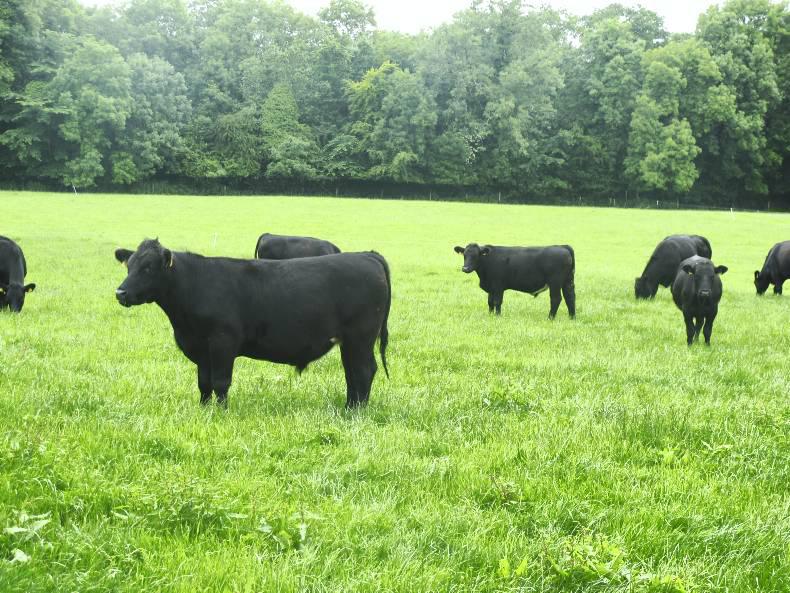LMC has focused on the main elements of supermarket specification including age at slaughter, weight, number of farm residencies and time spent on last farm prior to slaughter.
Cattle weights
According to the bulletin, the average steer carcase weight during August 2015 was 353kg, a 12.4 kg increase on August 2014 when the average carcase weight was 340.6kg. This year-on-year increase in weights is reflected in a drop in the number of steers, making the ideal weight with 60% hitting the target compared with 64% in August 2014. Heifers typically finish at lower weights though there was an average increase to 318kg in August 2015 compared with 312kg a year earlier. When these are added to the steer kill, the combined average making the 380kg target is 75%.
The number of steer carcases in the 380-420kg weight range increased from 19% in August 2014 to 24% in August 2015 and the number over 420kg went up from 6% a year ago to 9%. NI factories tend to operate with penalties as opposed to a base-plus-bonus system that operated south of the border. Penalties are nominally 20p/kg on cattle over 420kg but there is considerable variance on this, depending on numbers of cattle available. During August 2015, the average penalty on R3 grade steers over 420kg that were otherwise in-spec was just over 9p/kg. Factories make no secret of the fact that they want to get the weight limit down to 380kg but at present seem to accept up to 420kg without deduction.
Age at slaughter
In Northern Ireland, the notion of 30 months being the ideal upper age limit has become well established. In August 2015, 87% of steers and 85% of heifers met this target. For those that don’t meet this, the indicated penalty is 10p/kg with the major processors. During August 2015 the average penalty on R3 grade steers and heifers over 30 months of age that were otherwise in-spec was 7p/kg. Factories in the north are particularly strict on young bulls being under 16 months. In August 2015, 88% of young bulls killed in the price reporting factories was under 16 months compared to 83% in August 2014. Young bulls accounted for 13 per cent of the prime cattle kill in NI both years.
Quality Assurance
Since the factories introduced severe penalties on cattle that weren’t quality assured (QA) early in 2014 of between £100-150 per animal, the number of QA animals has increased from just over 90% then to 98.5% in August 2015. With this high level of compliance with QA, it is difficult to establish the extent of penalties being imposed. With such low numbers not QA, it is possible that the odd one off doesn’t get hit but certainly if any numbers were presented penalties would be draconian. The NI QA scheme is broadly similar with the Beef Quality Assurance scheme south of the border, though there are some differences, the most notable being a need for a 90-day residence on a QA farm to be eligible compared with 70 days south of the border.
Farm residencies and time on last farm
Cattle presented for slaughter with more than four farm residencies became the subject of penalties in NI early in 2014 and caused serious friction between the factories, marts and farmer representatives. This was to run for months but a year on it is clear that only a tiny number are outside four residencies with 98% of cattle making the target in August 2015 compared with 96% in August 2014. Many of the supermarket and burger chain customers have a requirement that cattle come straight from farm to factory. This varies between 21-90 days at the upper end. The NI kill in August 2015 showed that 93% of cattle slaughtered met this.
Conclusions
With British beef prices the leaders in Europe by a distance and Northern Ireland by virtue of being part of the UK eligible to carry the Red Tractor logo, it is logical that their prime market target is the UK based supermarkets and burger chains and the manufacturing sector that also supply them. Serving this relatively lucrative market is demanding but when we compare NI prices with those paid south of the border during the past year we can see that there is a reward. Irish beef is second choice in the UK, which is the market for half of Irish production. Mainland Europe takes most of the remainder, but in both cases the return to farmers in significantly lower than it is for their Northern Ireland counterparts. Irish factories tend to be more flexible on specifications so presumably continental buyers are more tolerant. There is also resistance among farmer representatives south of the border to stricter specifications on issues like age and weight. However, if factories could return prices to the level NI farmers received over the past year, the debate would get interesting.






 This is a subscriber-only article
This is a subscriber-only article











SHARING OPTIONS: